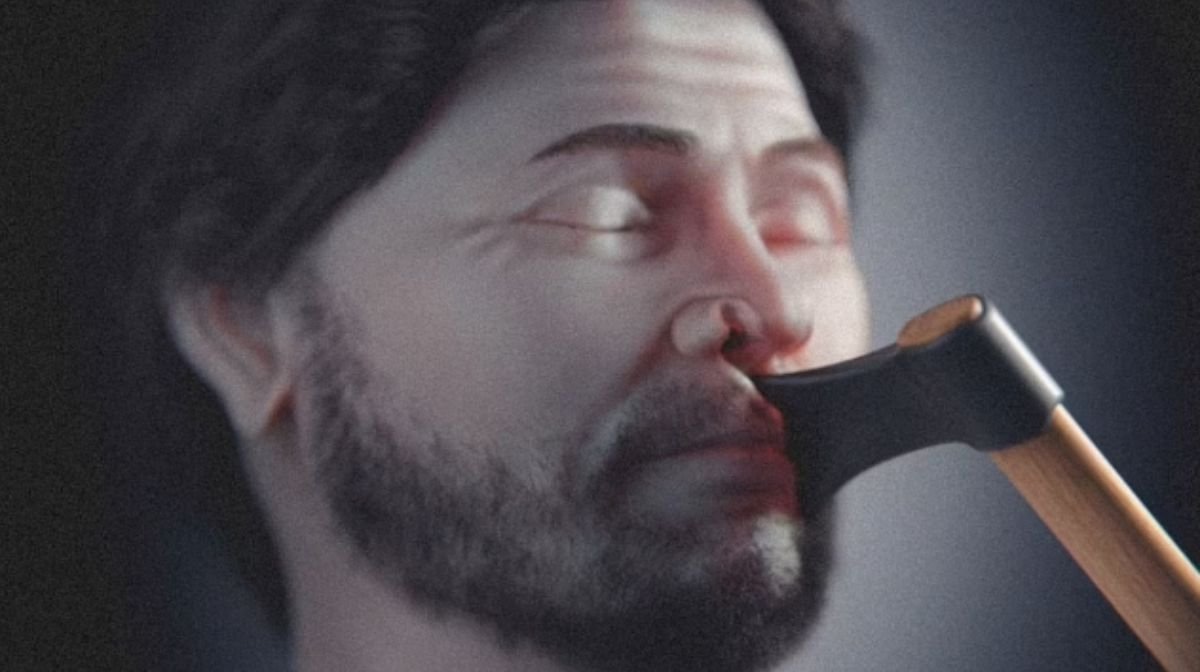He said: 'Once the skull was ready, a series of soft tissue thickness markers were spread across the skull.
'These markers, roughly speaking, indicate the skin boundaries in some regions of the face.
'To complement the data, we imported a CT scan of a living donor and deformed the bones and soft tissue from the CT scan to match the face being approximated.
'With the basic face defined, we finalised the approximation and generated the most scientific image, in shades of gray, with eyes closed and without hair.'
The skull itself yields an incomplete set of data, so some aspects – like the size of the nose, mouth and eyes – are projections based on statistical data.
Meanwhile, matters like hair and skin tone are subjective.
But the end result is an approximation of what the warrior would have looked like at his time of death.
Whether it was blow from axe that proved fatal remains unknown.
Mr Moraes said: 'It is difficult to estimate this with the skull alone.
'But surely such an injury would not be an easy thing to treat, considering the year and the reality at the time it was inflicted.'
For Mr Moraes, the images bring home the reality of war.
'These images are quite impactful,' he said.
'Today we have several conflicts happening in the world and we usually observe the scenes from afar, having no idea what happens to the combatants.
'Imagine how it is for those who receive such violence.'






















